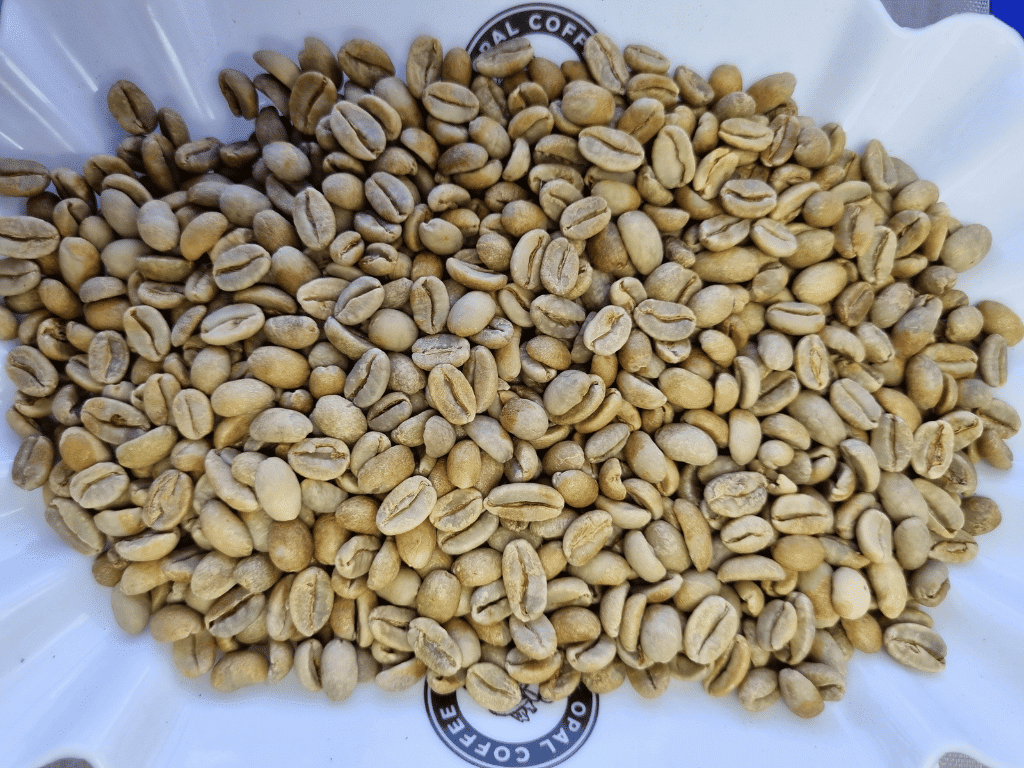
Coffee Varieties Explained
The first blog of the year is going to be about understanding coffee varieties.
With more than 125 coffee species, only two are commercially viable: Coffea arabica and Coffea canephora (robusta).

The journey from bean to cup is meticulous and detailed. It is not as simple as harvesting, processing and importing green. In fact, green coffee undergoes various grading to determine the quality of the bean. In this blog, we will dive into what coffee grading entails, how it works, country-specific grading, and why it is important.
Coffee grades define the level of quality and is a quality classification, entailing a series of technical assessments to determine these qualities, value and classification. A coffee grade helps sellers and buyers understand the quality benchmark with each other. There are different grading methods for different regions around the world but ultimately the goal is to identify coffee beans with superior characteristics such as size, density, and moisture content. Factors that are considered when grading coffee are the bean size, colour, weight, shape, and if there are defects present.
Here are the steps and factors involved with coffee grading:
Sampling: The grading process will generally start by sampling, where graders select a representative sample from a larger batch of green coffee beans which should be an accurate reflection of quality of the overall quality of the batch.
Defect Analysis: A vital part of the grading process is the visual analysis of any defects that may be present. Common defects include:
Quakers: Underdeveloped coffee beans
Broken Beans: Fractured beans that can lead to uneven roasting
If these defects are not identified, it will drastically affect the coffee’s overall score, quality and classification.
Moisture Content Analysis: Moisture content is crucial for determining the shelf life and flavor of coffee. Moisture meters are used to make sure that the beans have an optimal moisture level which is generally between 10-12%. This is important because if the moisture is too high, it can lead to mold, while low moisture can affect flavor.
Screen Size Classification: Beans are sorted by size using a series of screens with varying hole sizes. Larger beans tend to produce better-quality coffee, so size is an important factor in grading.
Screen-size is a traditional method of grading coffee beans and is down by sifting coffee through metal sheets with progressively smaller holes. Usually, the size of the holes are measured in 1/64 of an inch.
Cupping: The next step in the grading process is cupping. A familiar step to assess and evaluate the attributes of the coffee. This sensory evaluation helps determine the coffee’s overall quality and potential.
It is important to discuss country-specific coffee grading as there is no universal coffee grading system, which can be a little bit confusing. Some examples and terminology are:
Brazil: uses a numbering system where higher numbers indicate larger beans. It is based on the standards set by the Brazilian Official Classification (COB).
Brazil was the first country in the coffee belt to have a standardized coffee bean grading system from 1836 onwards.
Colombia: uses EP for preparation, and Excelso and Supremo for size grades. Grades:
Excelso: A grade where at least 95% of the beans are screen 14 and at least 50% screen 15.
Extra: these beans are also considered high quality, but they might be slightly smaller than Supremos.
Supremo: A grade where at least 95% of the beans are screen 17 and 100% is above screen 14.
Central America: Uses designations like SHB (Strictly Hard Bean), HB (Hard Bean), and SHG (Strictly High Grown) to indicate higher quality based on altitude and density.
Indonesia: Uses a combination of defects and size, with Gr. 1 being the most common imported grade.
Kenya: uses a size-based system, with AA being the highest quality. Grades:
Kenya PB (Peaberry): Instead of the usual expected two flat-sided beans, a single round bean develops within this coffee cherry.
Kenya AA: Indicates large beans and are renowned for their bright acidity.
Kenya AB: Combines beans of slightly smaller size than AA.
Kenya C: Smaller bean size and may have minor defects compared to the higher grades.
Ethiopia: uses a number-based system from Grade 1 – Grade 5. For further information, we have actually already written a blog around the Ethiopian Grading System.

Grading ensures that coffee beans meet specific quality standards. By evaluating factors like size, defects, and moisture content, graders can determine the overall quality, which affects flavor and aroma.
The grade assigned to coffee beans directly influences their market value. Higher-quality beans typically command higher prices, benefiting farmers and exporters who produce top-notch coffee.
Accurate grading fosters consumer confidence. When buyers know a specific grade is associated with quality, they are more likely to choose those products, leading to a more reliable market.
Grading incentivizes farmers to produce high-quality beans. Those who consistently meet high standards can secure better prices, promoting sustainable farming practices and improved agricultural methods.
Grading adds a layer of traceability, helping consumers understand the origin and quality of their coffee. This transparency is increasingly important for ethically-minded consumers.
In summary, grading plays a vital role in ensuring quality, setting prices, building trust, and encouraging sustainable practices in the coffee industry so next time you’re buying coffee, try different origins and pay attention to their grading.

The first blog of the year is going to be about understanding coffee varieties.
With more than 125 coffee species, only two are commercially viable: Coffea arabica and Coffea canephora (robusta).

In late October and early November, Jason (Opal BNE) and Hengky (Opal SYD) traveled to West Java to visit several coffee farms, with the goal of developing a sustainable and long-term buying plan.
© Copyright Opal Coffee 2025. All Rights Reserved | Privacy Policy — Designed by Hoot Media
